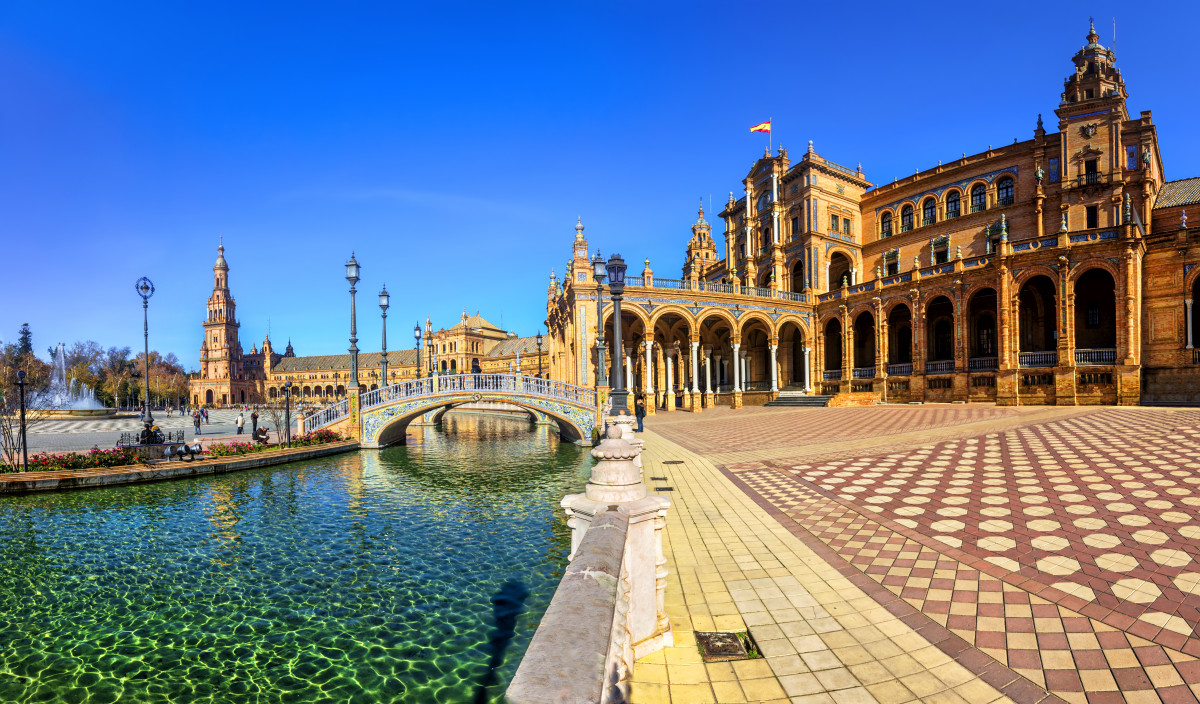On a round trip through Andalusia
Spain is a beautiful country and offers great diversity with its many different regions. The region of Andalusia is located in the very south of Spain and is considered to be the hottest region in Europe.
Temperatures above 40 degrees are not uncommon in summer and at midday the entire region comes to rest and its residents wait in the cool of their houses until it is bearable outside again.
“En la Calle”: The lifestyle of the southern Spaniards
Life in the cities only really starts when it gets dark and people often sit outside in the street cafes and restaurants until after midnight, even during the week. This way of living together is called “en la calle” (on the street) and describes an attitude to life that can be felt in the cities of Andalusia such as Seville, Malaga, Cordoba or Granada.
If you travel to southern Spain in summer, you should set a leisurely pace for your sightseeing program due to the climate. In spring (until the end of May) and in autumn (from the beginning of October) the climate is more pleasant and climate-sensitive people should choose to travel through Andalusia during these times of the year.
Rental car – yes or no?
Basically, the entire region offers beautiful beaches, friendly people and delicious food in every season, in addition to exciting cities and a lot of culture. There are different ways to travel to Andalusia. It is possible to travel from Germany by car, but it will take between 22 and 25 hours depending on where you live in Germany. Many vacationers therefore fly to the south of Spain and then take a rental car from the airport.
A rental car is practical in Andalusia, but not absolutely necessary, as all places are also connected by cheap and very good buses and trains. Various sections of the beach can easily be reached with a car and even small villages (such as the white villages of Andalusia) are easier to reach by car than by bus.
A region with a strong Moorish influence
Each of the major Andalusian cities has its own charm and attractions, and each is worth a visit in its own right. The imposing Alhambra in Granada, the Mezquita de Cordoba, the Alcazaba in Malaga or the Giralda in Seville – many old buildings have a Moorish influence and attract millions of tourists every year.
But the student city of Cadiz right on the sea or the surfing town of Tarifa are also popular travel destinations in Andalusia and round off a stay in southern Spain with a dip in the Atlantic.
Book in advance or take a spontaneous look?
Anyone traveling through Andalusia can either predetermine their route and pre-book accommodation from home, or they can drive spontaneously from place to place. If you are willing to look for accommodation for a longer period of time or if you have to pay a few euros more for an overnight stay due to the spontaneity, you can let yourself drift in Andalusia and stay in the respective places as long as you like.
However, in order to see structures such as the Alhambra, visitors must reserve tickets in advance, as only a certain number of people are allowed into the different areas of the area each day.
Besides the numerous old buildings, flamenco dancing is also very popular in Andalusia. Many restaurants and theaters offer special flamenco shows, which are very popular with tourists.
The peculiarities of Andalusian cuisine
From a culinary point of view, Andalusia is the birthplace of tapas – here a free snack is served with every drink. Whether fried fish, meatballs or potatoes with aioli – if you like Spanish cuisine, you will love Andalusia.
Typical dishes and products are gazpacho (a cold vegetable soup), fish dishes such as marinated anchovies, Iberian ham, sherry, goat and feta cheese. Wine and beer are enjoyed by the locals at any time of the day and are available in most bars for just a few euros.
A trip through Andalusia is a great experience and an authentic insight into a very special and very authentic region of Spain, which is absolutely worth it. A minimum of 10 days should be planned to see most of the region – two weeks is even better.
